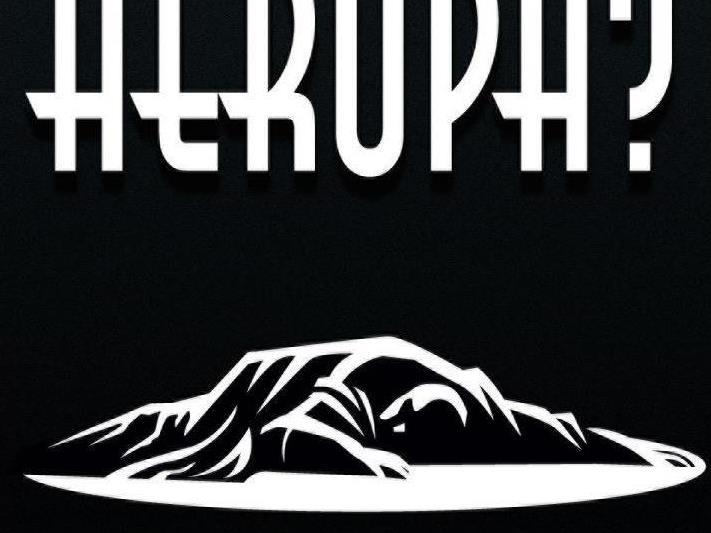With its stylised pastiche aesthetic that borrows from comic book lore, pulp fiction and more, to provide its reverent and original take on a superhero caper, Who is Killing the Great Capes of Heropa? is an ambitious homage to the comic book universe as we know it. While tapping into our adoration of pop culture entertainment goodies and providing an Australian caped crusader to cheer for, this novel provides rollicking escapist fun.
The gambit of the novel – and a delightful one at that – is to engage readers by immersing them in a wonderland of beloved pop culture-canon furnishings: think of the fully developed worlds within Jasper Fforde’s Thursday Next book series, Who Framed Roger Rabbit? and Wreck-It Ralph which playfully exploit treasured literature, cartoon and video game characters, conventions and settings, respectively, within their compelling adventures.
In Who is Killing the Great Capes of Heropa? the fabric of Heropa’s universe is threaded with celebratory nods primarily to the Silver Age and Bronze Age of comics (of the late 50s to mid-80s) and skeins typical of Dashiell Hammett and Raymond Chandler’s pulp fiction – there are also ingredients taken from modern art and architecture and many other notable pockets of popular culture. Many pop out quite strikingly and others are subtly interwoven for devout comic book fans to discover or to be gleaned on re-reading.
Beyond this postmodernist style, the narrative’s premise is that citizens of a futuristic dystopian Melbourne attempt to solve their life’s ills by plugging in to a virtual reality game where they can don cape-crusader clothes, and along with their new get-up, select a superpower, and elect the side of good (Equalizers) or evil (Unmitigated Rotters) to fight for.
The protagonist, fifteen-year-old Jack, aka Southern Cross when in superhero (or Cape) livery, expresses the appeal of Heropa for such jaded Melbournians quite pointedly when he claims he signed up for ‘[a] comic book world in which people didn’t really die or vanish. They picked themselves up, made a quip, brushed themselves down, and moved on to the next adventure.’
The clincher for Jack is that ‘brush down and move on’ is no longer an option in Heropa. While, normally, the rules dictate that Capes cannot kill each other, and a daily ‘reset’ mechanism ensures Capes restore to their pristine selves sans any kind of injuries incurred, things have gone awry of late with Cape corpses multiplying and the ‘reset’ on the fritz.
And while he may have escaped his solitary existence in an unforgiving city, he now must adapt, and grow up, in a metropolis that is no longer a utopia of glorious towers, slick fast cars, and good and evil avatars engaged in cathartic and fun, and ultimately harmless, battles. Jack must now solve why Heropa’s order has been upset and who is behind it.
Jack is ever the naive idealist hero of this piece; his costume is even modelled as an Australian variant of Captain America. Bergen teams him up with Cape characters that provide for an interesting personality mix and hero-collective dynamic. There is Brick, a clear nod to The Fantastic Four’s Thing, a hulking blustering mass of bricks moulded in human form with good (albeit camp) humour. And Pretty Amazonia, a crossbreed of Sailor Moon- and Wonder Woman-like ilk with moxie and a realist’s sensibility in tow.
For all the strength and heroic gumption behind these characters, it is their vulnerabilities that endear the reader to them. The glimpse of Jack eking a threadbare and solitary existence in unforgiving Melbourne, and the comfort he finds in the comic book realms is poignant. Then there are also the glimpses of humanity that come from his connection with a Blando (a non-Cape, ordinary citizen, in Heropa). And behind Pretty Amazonia’s tough shell, the childhood inspiration for her avatar also shows a rare sensitive side to her. As for Brick, there is a secret emotional part of his life that intrigues.
The trio’s Scooby-gang-like dynamic also provides interesting dimension. Although at times they do get bogged down in rambling dialogue that can either be too hammed up or seems to deter from the action a little too long and leave the reader wanting; however, it could be argued that there is a role playing game-like feel about this technique.
Politics surrounding the concerns of Capes, Blandos, and Melbourne’s citizens are probed to a degree and touch on issues around law enforcement, power and mercy, though it felt like there could have been further exploration without impinging on the largely feel-good vein of this world.
There is also a bit of a deconstruction of the comic book hero and hero world conventions at play in this novel, stemming from Bergen’s grand investment in, and fascination with, the comic genre storytelling mode. A large part comes through at the beginning as Jack is provided an orientation of Heropa and its ins and outs, and while mostly entertaining, there is a tendency to spend too much time explaining the set-up.
What works well are the little interjections through the remainder of the novel: Jack analysing the difficulty of eating with a full face mask as opposed to a half mask like Batman’s; or realising that posing for the typical hero running-cum-tearing through newspaper shot is physically awkward; and an exploration of the creation of superhero costumes as an act of artisanship.
The serialisation structure – the novel is divided in parts and issue numbers – along with graphic art (some that actually tell parts of the story) and the readymade-quotation aesthetic all cleverly add to immersing the reader in this comic caper universe; the form astutely follows the concept. On the odd occasion calling out a Heropa version of a comic book attribute from reality loses its winking and nostalgia appeal as it begins to tire.
On the pulp side of genre scale, shadiness (both atmospheric and characterisation), unreliable narration and red herrings are aptly employed. As the novel nears the big reveal, around the last third, the action and characterisation picks up in strides, as all seems to flow more naturally – and the addition of inquisitive journalist Gypsie-Ann amps up the humour and overall character dynamic.
Clearly well-versed in the comic book genre, Bergen has provided a cape crusader mystery chockfull of the requisite character and setting tropes, humour, and twists that comic aficionados and general readers alike will lap up. And the pulp fiction elements provide a refreshing idiosyncratic edge to the superhero narrative. Who is Killing the Great Capes of Heropa? will appeal to readers who enjoy clever, playful genre fiction with heart.
Rating: 3.5 stars out of 5.
Who is Killing the Great Capes of Heropa?By Andrez Bergen
Paperback, 474 pages
Published by Perfect Edge Books





